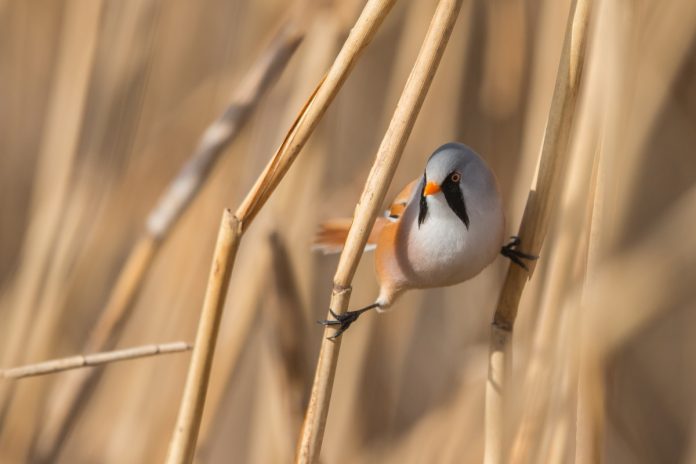
Beautiful Birds of Nature – The Bearded Reedling
Do you want to smile? I understand it can be rather difficult, given the current pandemic. However, these little birds will surely put you in a happy state.
They’re identified as Bearded Reedling, and they’re completely adorable!
Most bird species are pretty awesome – each variety has unique and ornate feathers and elaborate mating habits.
It’s difficult not to be fascinated by nature when you look at all the various bird species.
But the Bearded Reddling birds are unquestionably the cutest little things to catch our notice.
Not only are the palm-sized little birds pretty fluffy, but they also can do the splits! Yes, that is correct. Those little egg-shaped birds can do the splits.
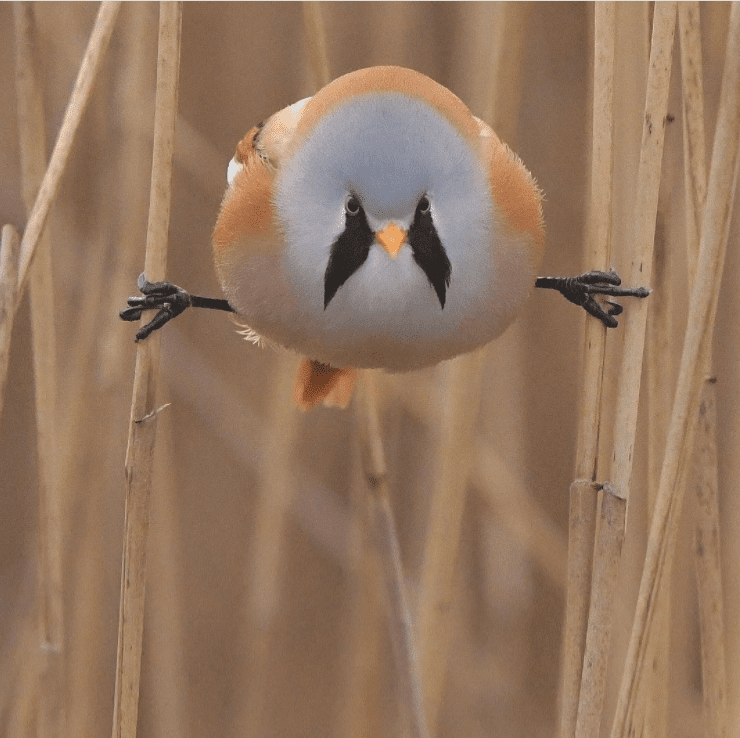
The typically small bird, which is around 16.5cm in size, has a natural inclination to perch on tree limbs and reeds by doing the splits.
The bearded reedling (Panurus biarmicus) is a tiny or small, sexually dimorphic (different physical features depending on sex) reedbed and a perching bird.
It is commonly known as the bearded tit due to some similarities to the long-tailed tit ( although not related) or the bearded parrotbill.
It is the only species in the genus Panuridae.
Classification
- Classification: Bearded Reedling (Panurus biarmicus)
- Scientific Species Name: Panurus biarmicus
- Genus: Panurus
- Class: Aves (Birds)
- Family: Panuridae
- Order: Passeriformes (perching birds)
- Subphylum: Vertebrata (vertebrates)
- Phylum: Chordata
- Kingdom: Animalia (animals)
10 Bearded Reedling Facts
- The bearded reedling, also known as the bearded tit, is a species of bird found in temperate regions of Europe and the Palearctic.
- Black patches under its eyes characterize the male bearded reedling, and the female is pale orange in color.
- These birds are mostly seen near wetlands among the reeds and do not migrate frequently.
- Bearded reedlings have a lifespan of two to three years, which is one of the shortest among bird species.
- During their short lifespan, they spend a lot of time nesting, laying eggs and raising their young.
- Bearded reedlings lay eggs two to three times a year and have many offspring.
- The feathers of bearded reedlings are dark grey to black on the primary feathers and brown on the secondary feathers.
- They have yellow eyes and a distinctive black moustache resembling a Mexican droopy moustache.
- Germany’s Lake Federsee in Upper Swabia is a great place to observe these birds.
- Bearded reedlings have a lovely appearance and are considered an attractive species to watch in their natural habitat.
Bearded Reedling Size
Bearded Reedling (Panurus biarmicus) has a body length of 15-18 cm. This small bird has a straight yellow and pointed beak and black feet. The upper body is brownish-yellow, and the wings are black with white wing spots. The outer tail feathers are white.
Bearded Reedling Male vs the Female
The male and female bearded reedlings can be differentiated by appearance. Male bearded reedlings have black patches under their eyes, while the females are pale orange in color. The males are round in shape, and the females are equally round. The bearded reedlings are observed near wetlands among reeds and do not often migrate.
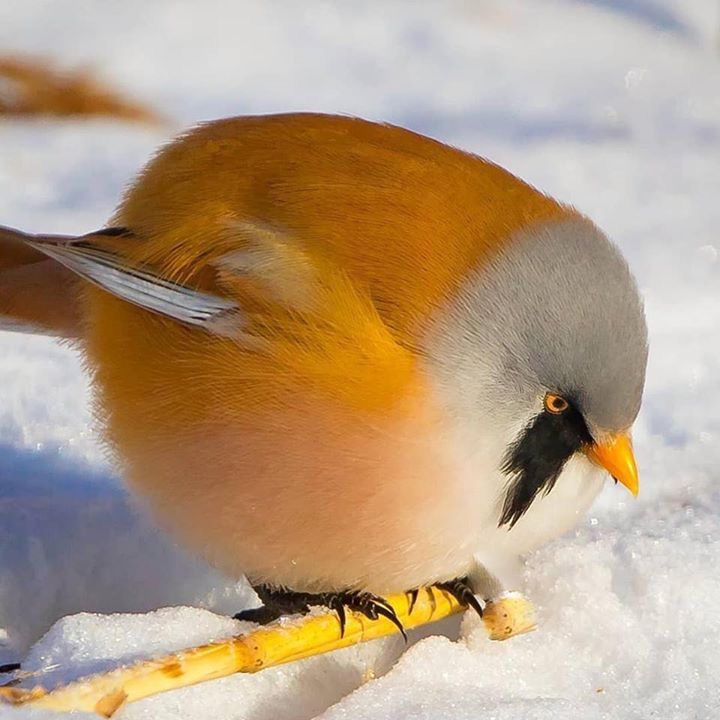
Bearded Reedling Taxonomy and Systematics
The bearded reedling was first reported by Carl Linnaeus in his 10th edition of Systema Naturae in 1758.
He set it in the genus Parus with the tits. The species has been identified with the parrotbills in the family Paradoxornithidae after being separated from the family’s true tits.
More modern research hints it is a unique songbird – no other living species seems to be especially closely related to it. The species is now set in the monotypic family Panuridae.

Molecular phylogenetic investigations have shown that the bearded reedling is most familiarly related to the lark family Alaudidae.
The current species name, Panurus, is from the Ancient Greek panu, “exceedingly”, and ουρά, “tail”.
The particular biarmicus is from “Biarmia”, a Latinised form of Bjarmaland, once part of Russia’s Arkhangelsk Oblast region.
Bearded Reedling Description
This is a small, lightweight, orange-brown bird, L 16.5 cm (6.5 in), with a long tail and a waving flight.
The bill is yellow-orange. The male has a grey top and black moustache (not a beard); the lower tail bushes are also black.
The female is commonly paler, with no black moustache. Flocks often reveal their presence in a reedbed by their unique “ping” call.
Bearded Reedling Call & Song
Bearded Reedling Distribution and Habitat
Where does the Bearded Reedling Live?
This species is a wetland expert, breeding colonially in extensive reed beds by lakes or swamps.
It feeds on reed aphids in summer and reed seeds in winter.
Its digestive system adjusts to cope with the very diverse seasonal diets.
The bearded reedling is a variety of temperate European birds across the Palearctic.
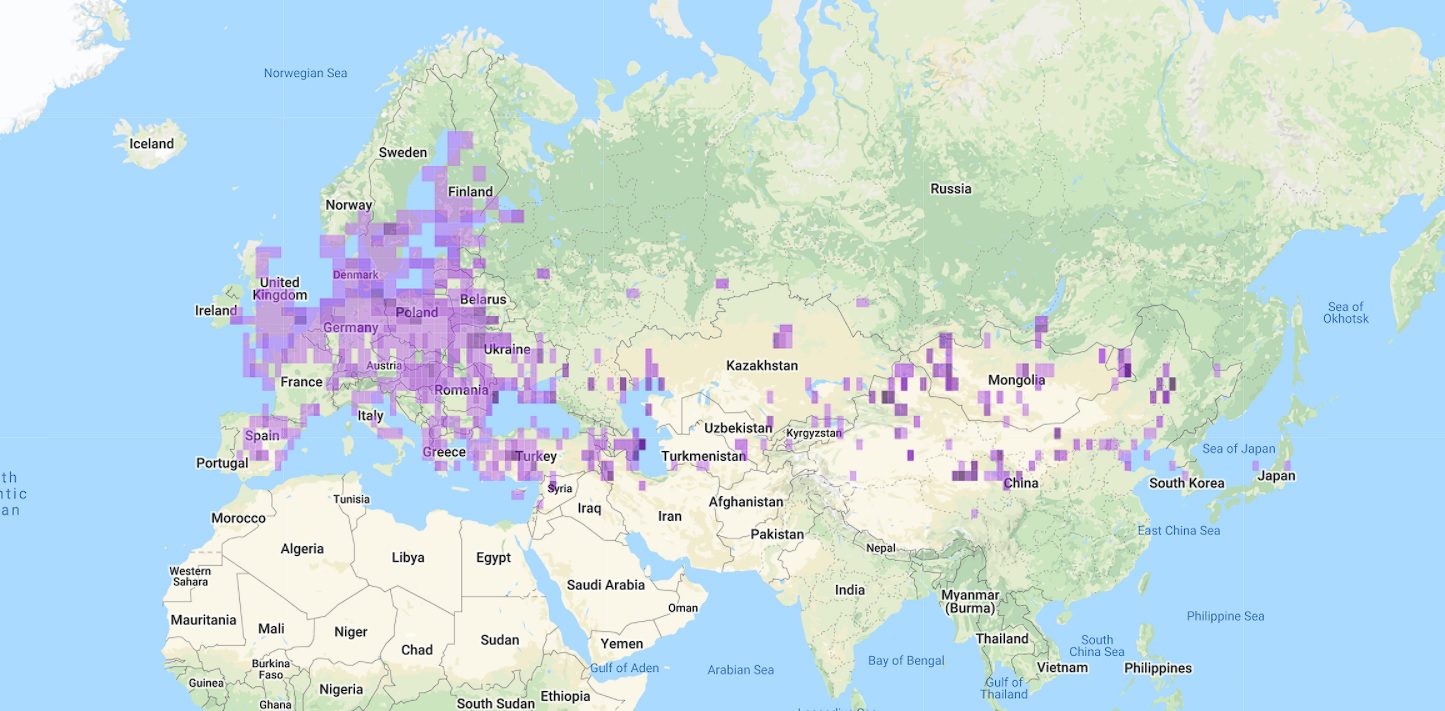
It is resident, and most of the beautiful birds do not migrate other than because of eruptive or cool weather conditions that force them to do so.
It is weak to hard winters, which may kill many birds.
The English community of about 500 pairs is essentially confined to the south and east, with a small group in Leighton Moss in north Lancashire.
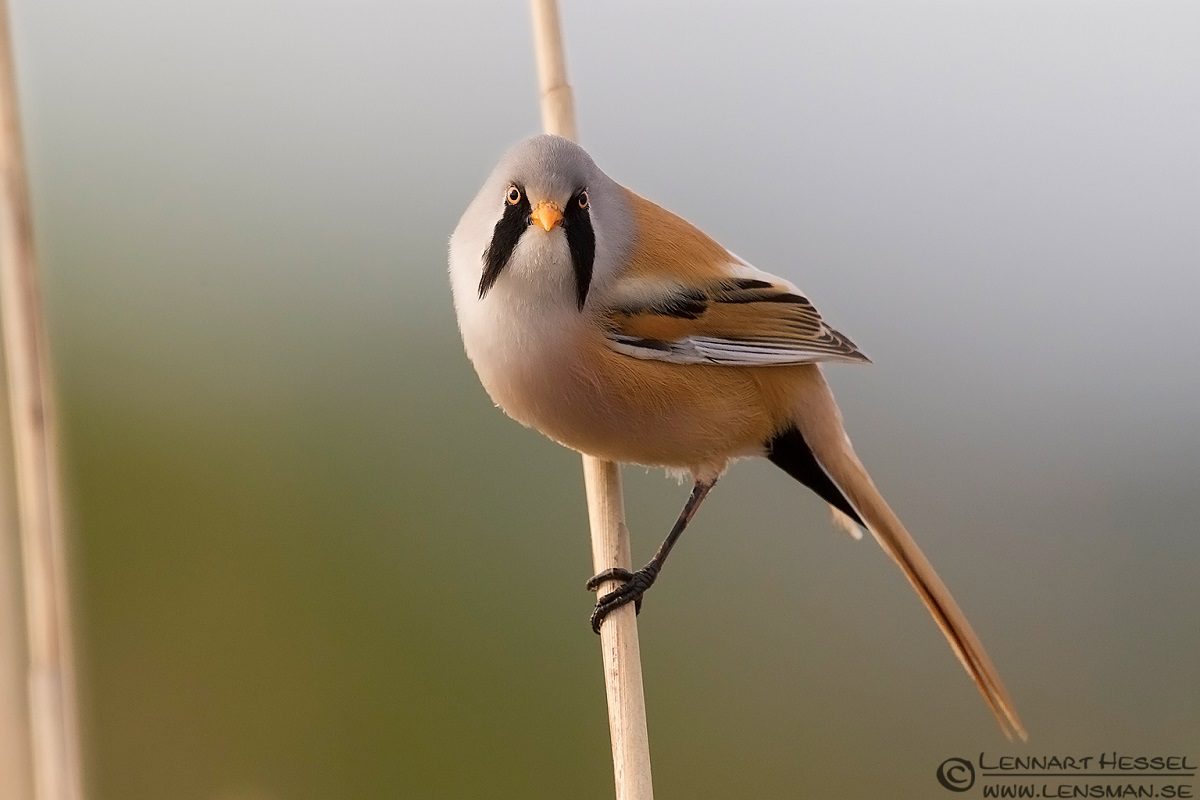
There is a small but increasing population in Ireland, mainly in County Wexford.
The most comprehensive single population in Great Britain is located in the reedbeds at the River Tay’s mouth in Perth and Kinross, Scotland, where there may be higher than 250 pairs.
The Bearded Reedling is the only European representative of a species that principally occurs in tropical regions.
It has no closer relation to tits, as its previous name, “Bearded tit”, suggested.
The comparatively inconspicuous and social birds often betray their appearance in dense reedbeds by their metallic, nasal communication calls.
Towards the end of the breeding period, families often form flocks. During this time, pairs then begin to form.
The couples may – unlike most of our native songbird varieties – remain together for numerous years.
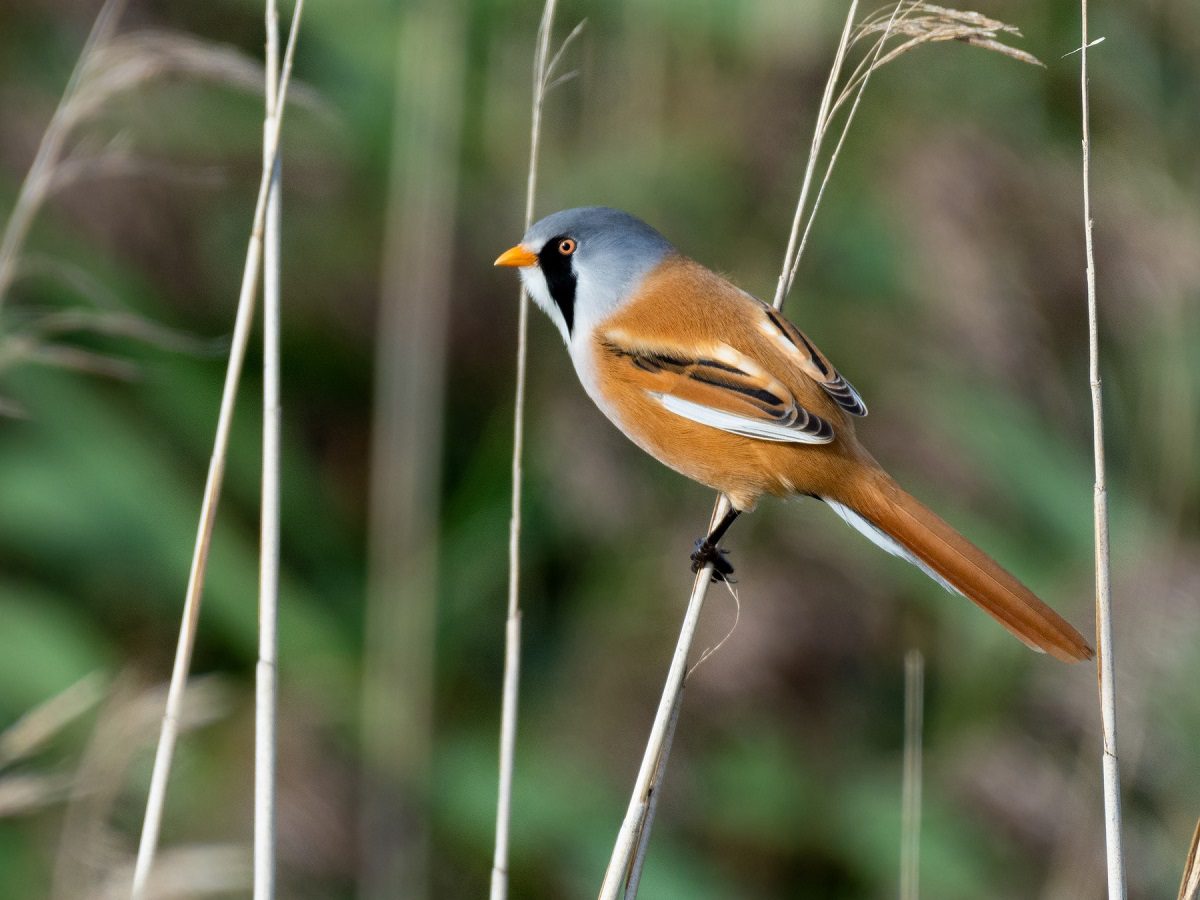
Their unique look makes them easily recognisable in nature. Just look for a small, egg-shaped, fluffy bird that fancies resting by doing a split on tree & reed branches.
Males can be quickly spotted for their gingerish-brown overall with bluish-grey heads.
They also feature black moustache-like marks that go from under their eyes down to their necks, with similar black streaks underneath their tails.
While still very similar to males, females are a little bit different.
They are much paler and don’t possess any moustache markings or black streaks under their tails. They also have darker bills than males.
This species has an excessive range which is declining but not at alarming rates.
Bearded Reedlings are not recognised for migration and could be found dwelling across Europe and Asia all year long.






































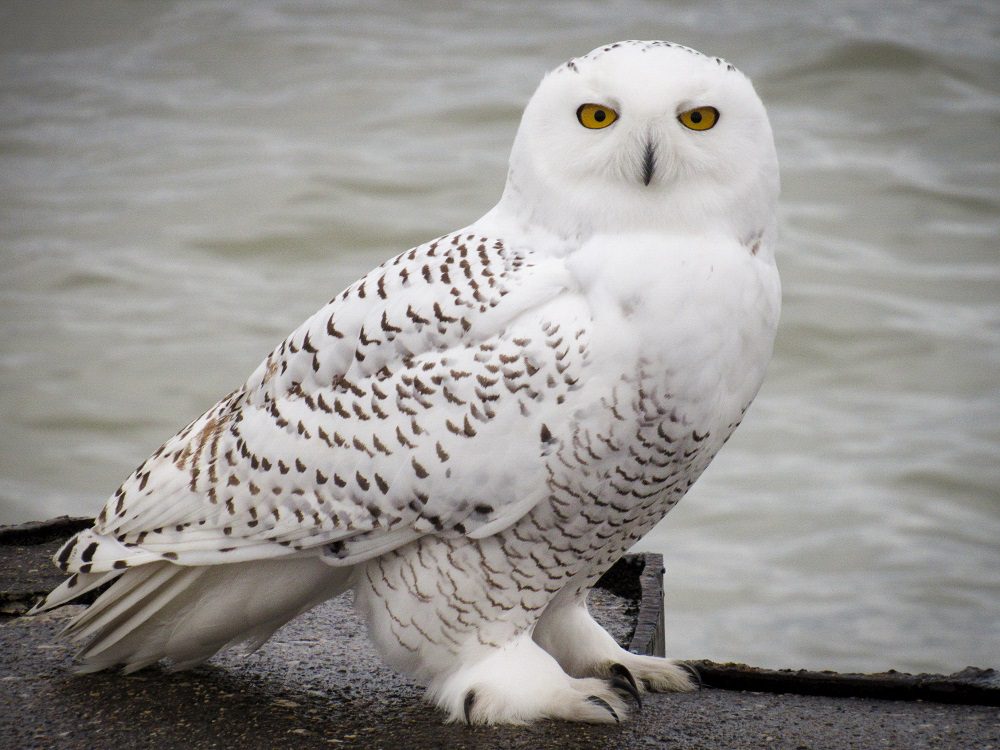
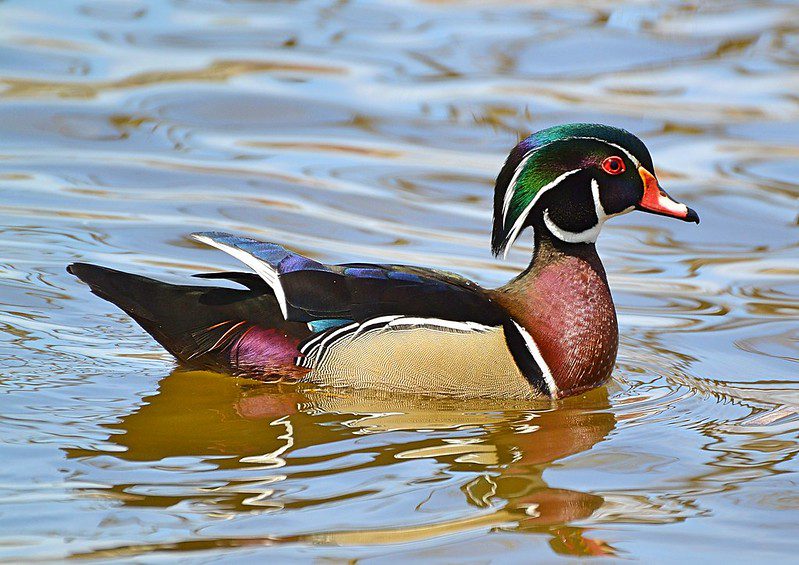





















good article for research. can’t find much info on the Bearded Reedling bird even on Britannica. thanks! 👍